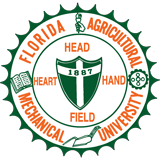
Recently, Anne Barrett, Director of Florida State University's Claude Pepper Center asked Eren Erman Ozguven, Ph.D., a civil and environmental engineering researcher at FAMU-FSU Engineering to talk about how roadway design affects older drivers. Here's the transcript of the resulting "Aging Today" segment that aired on WFSU 88.9 FM on July 31, 2018.
Thanks for Eren Ozguven and Mehmet Ulak-- of FAMU-FSU College of Engineering – for this week’s script.
All drivers encounter situations requiring quick processing and reaction. But this challenge is magnified by some of the changes that come with aging, like declines in vision, flexibility, and reaction time. How safely these situations are handled is determined, in part, by roadway design. More complex or less controlled designs – like roundabouts, interchanges and unsignalized T-intersections can be especially tricky for older drivers to navigate. Experimental studies find that older drivers face with difficulties in merging, lane change, and turning maneuvers due to declined visual and cognitive skills. They are especially overrepresented in left turn, wrong way, and angle crashes. Roadway features that improve our ability – at any age – to safely navigate driving challenges include having longer merge lanes, more lighting at intersections, bolder pavement markings, larger lettering on signs, more advanced warning of upcoming traffic patterns, and green arrows to protect left turns.

